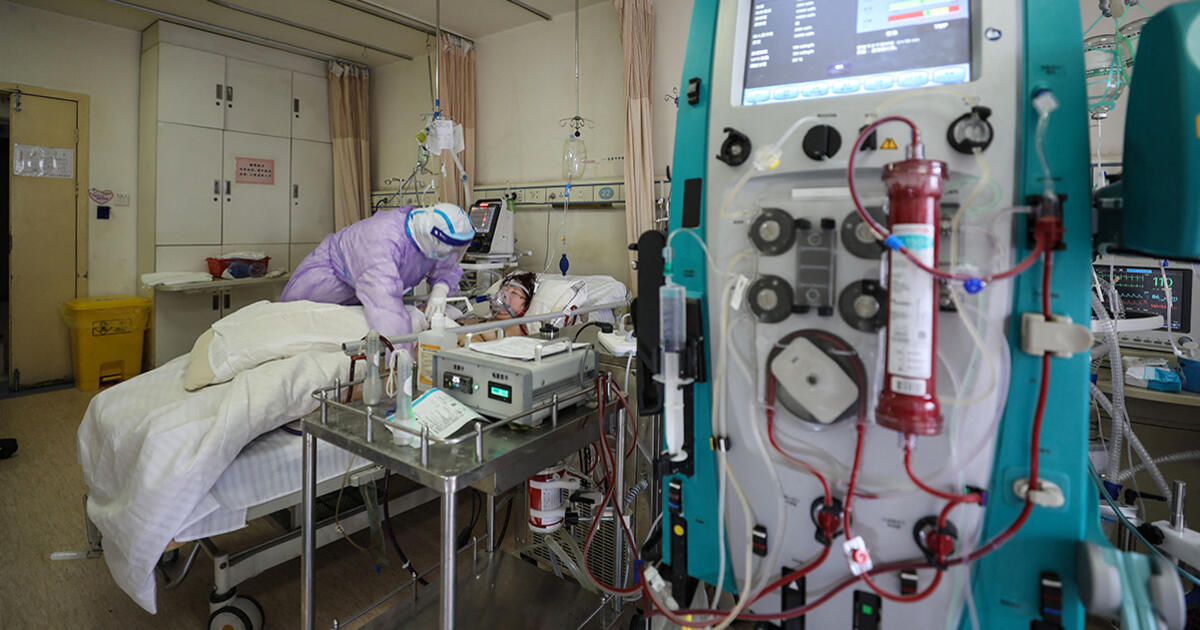To improve the limited lifetime of oxygenators available on the market, the BioArtLung project combines biomimicry and microfluidics in a system that mimics pulmonary capillaries. Stackable, it can oxygenate larger volumes.
When a patient suffers from severe lung damage or is awaiting a transplant, their oxygenation can be maintained by various devices. Setting up an ECMO circuit (Extracorporeal membrane oxygenation), including a macroscopic blood oxygenator, is a very popular solution but has several shortcomings. It includes the placement of a cannula in the groin and the neck, in order to bring the blood to the machine, which immobilizes the patient to the point that he cannot even sit up until the device is in place. After about 20 days, the blood will also have clotted to the point of saturating the oxygenation membrane and putting the ECMO out of service.
« The blood “understands” that it is leaving the human body, which triggers chemical reactions that form clumps that can cause serious thrombosis when they return to circulationexplains Anne-Marie Haghiri-Gosnet, research director at the Center for Nanosciences and Nanotechnologies (C2N). We therefore need biomimetic solutions, and this is precisely what we are developing within the framework of the BioArtLung project.. »
luring the blood
For this, BioArtLung uses microfluidic technologies, where liquids pass through channels of the order of a tenth of a millimeter in width, in order to design an oxygenator with a longer lifespan. Funded by the National Research Agency (ANR), the project is coordinated by Olaf Mercier, thoracic surgeon at Marie Lannelongue Hospital, with several academic partners.
« ECMO oxygenators come in the form of bowls, in which blood circulates around hollow fibers into which oxygen is blowndescribes Anne-Marie Haghiri-Gosnet. We prefer a more compact and biomimetic approach, with artificial micro blood vessels, lined with stem cells so that the blood does not realize that it is leaving the human body to reach the oxygenator. »
The microfluidic oxygenator (left, seen from above) maximizes the gas exchange surface. On the right, stacking multiple levels improves the maximum flow rate of blood to be processed.
–
–
–
–
–
Blood and air move separately through tiny channels made of polydimethylsiloxane (PDMS), a biocompatible material already used for soft contact lenses, while an extremely thin membrane lets oxygen molecules into the blood. The natural porosity of the PDMS membrane at the same time helps to remove CO2. The complete system comes in the form of a three-layer: one for the blood, the membrane, then one for the air or pure oxygen.
Improve oxygenation
The trilayers, ten centimeters in diameter, can be stacked like CDs in order to manage higher blood flows. Each trilayer can oxygenate 15 milliliters of blood per minute, and a minimum of one hundred and forty should be combined to allow good blood oxygenation of an adult patient. ” Our approach works better than all other microfluidic oxygenation systems in the worldemphasizes Anne-Marie Haghiri-Gosnet. However, manufacturing a single trilayer in the laboratory requires a whole day of work, so we are approaching industrial partners in order to scale up.. »
Olaf Mercier, for his part, has developed and patented a double-flow cannula system which is only placed at the level of the neck, and no longer also in the groin, which gives the patient much more mobility. This invention will benefit all types of oxygenators, including ECMO. BioArtLung’s oxygenator has been successfully tested in a pig model, but many developments are still needed before moving to clinical trials. The researchers are also considering applying their system to dialysis, which requires lower blood flow than oxygenation.
« BioArtLung has entered its final year of funding and we are in the process of publishing our final resultsconcludes Anne-Marie Haghiri-Gosnet.We hope to find an industrial collaboration to reach the one hundred and forty trilayers and enhance our work.. » ♦
–


